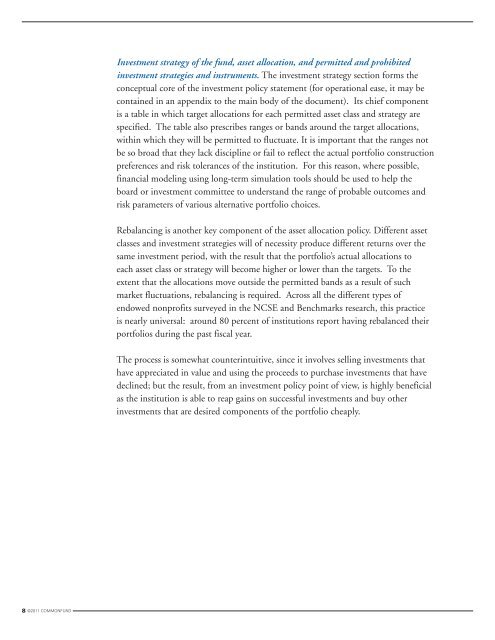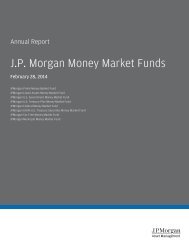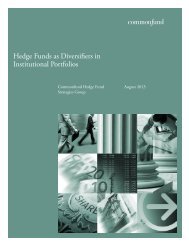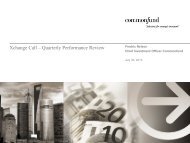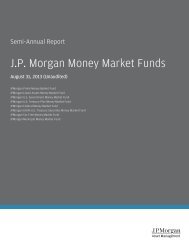The Investment Policy Statement - Commonfund
The Investment Policy Statement - Commonfund
The Investment Policy Statement - Commonfund
You also want an ePaper? Increase the reach of your titles
YUMPU automatically turns print PDFs into web optimized ePapers that Google loves.
<strong>Investment</strong> strategy of the fund, asset allocation, and permitted and prohibited<br />
investment strategies and instruments. <strong>The</strong> investment strategy section forms the<br />
conceptual core of the investment policy statement (for operational ease, it may be<br />
contained in an appendix to the main body of the document). Its chief component<br />
is a table in which target allocations for each permitted asset class and strategy are<br />
specified. <strong>The</strong> table also prescribes ranges or bands around the target allocations,<br />
within which they will be permitted to fluctuate. It is important that the ranges not<br />
be so broad that they lack discipline or fail to reflect the actual portfolio construction<br />
preferences and risk tolerances of the institution. For this reason, where possible,<br />
financial modeling using long-term simulation tools should be used to help the<br />
board or investment committee to understand the range of probable outcomes and<br />
risk parameters of various alternative portfolio choices.<br />
Rebalancing is another key component of the asset allocation policy. Different asset<br />
classes and investment strategies will of necessity produce different returns over the<br />
same investment period, with the result that the portfolio’s actual allocations to<br />
each asset class or strategy will become higher or lower than the targets. To the<br />
extent that the allocations move outside the permitted bands as a result of such<br />
market fluctuations, rebalancing is required. Across all the different types of<br />
endowed nonprofits surveyed in the NCSE and Benchmarks research, this practice<br />
is nearly universal: around 80 percent of institutions report having rebalanced their<br />
portfolios during the past fiscal year.<br />
<strong>The</strong> process is somewhat counterintuitive, since it involves selling investments that<br />
have appreciated in value and using the proceeds to purchase investments that have<br />
declined; but the result, from an investment policy point of view, is highly beneficial<br />
as the institution is able to reap gains on successful investments and buy other<br />
investments that are desired components of the portfolio cheaply.<br />
8 ©2011 COMMONFUND


